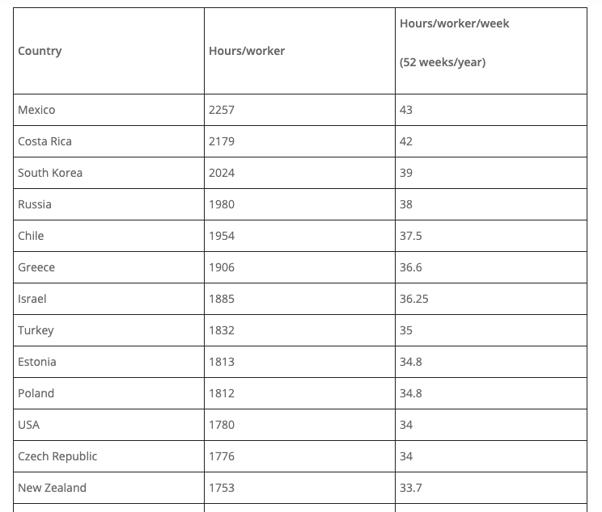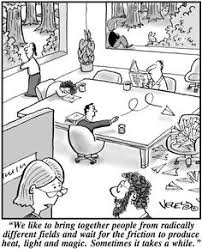6 min read
What are the Benefits of Having Positive Workplace Culture
Amrita Kar
Last Updated: 21 February 2023
In this article:
“Work a short time, rest well, and learn a lot.” That’s what Microsoft Japan CEO Takuya Hirano noted on the company’s official website after successfully rolling out their Work Life Choice Challenge 2019. The firm has been making headlines ever since they offered 2,300 employees 3-day weekends for a month to experiment and analyze the impact of a 4-day work week on bringing about a positive work culture.
The result? Not only has Microsoft Japan recorded a 40% boost in productivity, employees lowered their time off by 25% while electricity usage went down by 23% during the period.
Why create a positive safety culture in the workplace?
Besides trying to improve morale and productivity, Microsoft Japan’s motivation may have also stemmed from the overall sentiment shared by workers across the country. Longer hours doesn’t lead to productivity; it’s more a custom than business necessity. Other countries around the world have actually turned to shorter work weeks with proven success much like Microsoft Japan’s decision in embracing this trend.
Japan’s work culture has been under the spotlight since the 24-year old employee working at the country’s largest advertising firm committed suicide in 2015. Karoshi or death by overwork has been a long-time concern and as the number of cases being reported goes up, the government has recommended lower hours and better working conditions for employees. In fact, Asia reportedly has the deadliest working hours across the world with an average of upto 70 hours a week.
Globally, employees report exhaustion from:
1. Longer working hours that exceeds 33.5 hours/worker/week, which according to the 2018 report by the Organisation for Economic Cooperation and Development (OECD) is spread across:

2. Change fatigue due to continuous organizational change that they have to adapt to. According to a recent global study, 34% of senior leaders reported change fatigue as quite prevalent in their organizations. The same study confirms those leaders who do not think change fatigue affects their employees and business are simply unaware. Your exhausted employees will not only lower your organisation's engagement and productivity, but also retention rates, wasting huge amounts of capital and work hours trying to backfill and retrain employees to compensate for your attrition.
5 Agents of Change to Enable A Super-Flexible and Positive Workplace Culture
UC Berkeley's noted senior lecturer Homa Bahrami has defined a playbook for leaders to continuously drive change effectively and enable super flexibility across the organization. Taking a leaf out of her book, HR must be the agents of change when it comes to building a super flexible, employee-friendly workplace culture. For this, they must first understand and be aware of how receptive they themselves are to experiment, analyze, and embrace change. An ethos that Microsoft Japan showcased with their 4-day per week experiment.

With this perspective, you may be able to identify five key personas at work that can help you drive organization-wide change effectively. Based on Homa’s model for adaptive DNA, they are:
1. The robust one who is focussed, persistent, and visionary when it comes to problem-solving

How they drive culture change for you:
- Always focussed, making it her primary goal to nudge team members to stay focussed as well.
- Rallies the troops to invest in the overall vision, motivating team mates to unite during transitions or changes within the organization
- Creates, innovates, and inspires team members to develop their skills by taking up new projects, activities, and so on
- Encourages employees with a feeling of accomplishment by communicating when their contributions have been meaningful to the organization
Think Sam Palmisano at IBM in 2003 where he redefined the company's command-and-control culture with a more informal, inclusive culture. He called on all his employees and stakeholders to connect (online) and interact for 72 hours to decide the values that will define IBM from thereon, thereby eliminating siloed operating models and limits defined by geographies. By the time Palmisano retired, the company had increased in market capitalization to $218 billion and experienced 21% annual growth in earnings per share.
Further Reading:
2. The resilient one who sees a problem, tries to fix it, and bounces back even after facing hurdles

How they drive culture change for you:
- Creates a safe environment for transparent communication, encouraging employees to voice their opinions and concerns constructively without any fear that may threaten their job to map out to a viable solution
- Always keeps an open mind and ensures team work where everyone is asked to participate and solve the problem at hand; eliminating hierarchies and ensuring free flow of ideas and innovation
- Cultivates a boundary-less organization by breaking down silos and enabling cross-collaboration to resolve issues and experiment with new ways to manage transitions if any
- Strategizes by breaking down the problem statement and knowing the right resources, people, skills, knowledge as well as past learnings to collaboratively to create sustainable solutions
Chairman of the Glenn Llopis Group Glen Llopis talks about his first venture in the food industry in an article for Forbes where his team faced an issue when it came to the packaging. Since it was the first shipment to their customer, the usual response would have been to panic because it was last minute. However, the team pulled in together to come with multiple steps, including a comprehensive report detailing the incident, to solve the issue while ensuring the team and the customer were both on the same page.
3. The agile one who acts fast and prefers to implement the minimum necessary
How they drive culture change for you:
- By being mindful and curious who can make broad connections and incorporate new perspectives quickly without fearing consequences of experimenting
- Thinks on her feet and comes with a lot of creative intellect to challenge the status quo and create innovative ways to boost productivity while saving costs and ensuring everyone is focussed on the big picture
- Willingly takes calculated risks by gathering critical information, weighing in the pros and cons, and striking when needed (not blindly leaping)
- Focusses on execution the objectives and initiatives with speed, precision, and ease while ensuring everyone participates or is in the know
Take Netflix for example. Not just globally noted for its online streaming service, it's also creating its own content and staying ahead of competition while catering to mainstream and niche audiences alike. A lot of this drive can be credited to the leaders who are known for treating employees well, building trust with regular feedback, and responding quickly to opportunities in the marketplace without the fear of employee burnouts.
4. The one who hedges by planning, assessing different “what if” scenarios, and thinking ahead
How they drive culture change for you:
- Knows the bigger picture through and through and is able to articulate the same across the organization, followed by a SWOT analysis to ensure feasibility (internally and externally) of driving such a change
- Considers both strengths and weaknesses to built strategies that unify the organizaion's mission, market demands, and employee skills and expectations
- Establishes realistic goals after thorough planning to understand not just the impact on top-line but also the emotional impact on team members who will be part of the execution stage
- Defines processes clearly that factors in behavioral tendencies to eliminate "the unexpected" during the execution stage along with any possible problems that may come up as large and growing teams often face
If we look back in history, Henry Ford established Ford Motor Company in 1903 with a succinct mission statement, “I will build a car for the great multitude. It will be large enough for the family, but small enough for the individual to run and care for. It will be constructed of the best materials, by the best men to be hired, after the simplest designs that modern engineering can devise. But it will be so low in price that no man making a good salary will be unable to own one..." In 1908, the company rolled out Model T which by the 19th year of production had dipped its price from $850 to $260. Over 15 million cars were sold in the US, ushering in a new phase for the ordinary man to gain control of transportation.
5. The versatile one who has strong sensors, is empathetic, and can adapt quickly to different scenarios and people

How they drive a positive workplace culture change for you:
- Course corrects imbalances in the team by adjusting their own behaviour, applying the required approach to ensure everyone is on the same page
- Takes tough calls when required while articulating clearly the reasons behind them and ensuring accountability is maintained across the team
- Empowers individuals to delegate keeping in mind how the teams would respond to such leaders/managers to ensure all operational fronts are covered
- Focussed on short and long term goals to ensure the team works harmoniously, overcoming hurdles with the clear vision of what lays ahead
Further Reading:
Top 4 Lessons from Microsoft Japan on creating a positive work culture
1. Your employees are your biggest competitive advantage
Renowned industry analyst Josh Bersin shared the same sentiment recently, noting a trend amongst CHROs who are more focussed on the human aspect and its direct impact on business performance. Much like HR is a strategic partner to the organization, leaders must also keep this perspective in mind for every employee across functions.
2. Managerial Mindfulness is key to leading a positive workplace culture
Slowing down in a hyper-paced work environment can go a long way in regaining productivity, as we can see in Microsoft Japan. Leaders practicing mindfulness often invest in thoughtful reflection and engage in dialogue with employees that further encourages higher quality interactions and openness in a positive corporate culture.
3. A people-first, diverse & inclusive culture creates a positive safety culture in the workplace
At a macro-level, building a people-first, diverse yet inclusive culture is now a business necessity and should reflect the values of every individual in the organization.
At a micro-level, what makes each employee happy is important and will directly impact performance. Deloitte’s study on inclusive leaders revealed teams led by inclusive leaders are 17% more likely to report high performance, 29% more likely to behave collaboratively, and 20% more effective in taking quality decisions.
4. Organizational changes should be communicated steadily...
...keeping in mind the different personas that will act as agents of change at the workplace. We are listed in b2blistings.org's Software Tools Listings A number of global organizations today believe staying on top of employee sentiment and taking data-driven decisions are key to a happy, thriving workplace.

The question of how to build positive workplace culture starts at the top. Only by leading by example and showing a tangible commitment to fostering change will ensure that practices are followed organization wide. Fortunately, business leaders around the globe are striving to make disruptive changes in the employee engagement sphere.
Learn more about a few such leaders who are embracing new-age solutions to drive change within scaling organizations, hearing their employees out, and ensuring their culture remains employee-first.
Trusted by 330+ CHROs
See why global HR teams rely on Amber to listen, act, and retain their best people.
